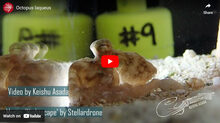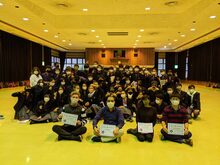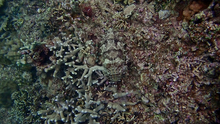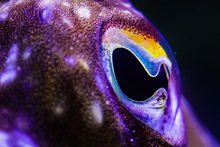Posts
Join Reiter Unit as a Global Science Scholar postdoctoral fellow!
Reiter Unit is honored to have been selected as one of the hosts for this unique postdoc fellowship program, Sponsored by the Chan Zuckerberg Initiative (CZI) and the Japanese Cabinet Office.
Apply and join Reiter Unit as a Global Science Scholar!
Program Overview
Octopus laqueus
Introducing Octopus laqueus, a small nocturnal octopus that was discovered in Okinawa. It is being used at the Computational Neuroethology Unit (Prof Sam Reiter), to study active sleep, the results of which were published in the journal Nature in June 2023.
Octopus incella
Octopus incella is an octopus that was discovered in Okinawa, and can be seen among the tidepools at night. It is currently being cultured by Reiter Unit and the Animal Resources Section, with the third lab-grown generation being reared in 2023. It's the first octopus species to have a closed life cycle at OIST and the first time it has been done with this species.
What kind of orange tree is this?
The Starry Night Octopus (Callistoctopus luteus) can be seen in a variety of biomes after the sun goes down. Here, one swims up to show what might be a threat display, as if challenging the bright and confusing lights.
A cooperative model
The Broadclub Cuttlefish (Sepia latimanus) is sometimes a shy animal, but sometimes they don't seem to mind being watched up close.
Squid against the surge
Bigfin Reef Squid (Sepioteuthis lessoniana) are common across Okinawan waters. Often they are schooling just underneath the surface, sometimes right up against where the waves hit the rocky shores.
A slow reveal
Abdopus is a genus of octopuses often seen in shallow waters around Okinawa. They have some of the best camouflage out of all local cephalopods. Here, an Abdopus slowly reveals itself with the threat display when it realizes it's been seen.
My Octopus (and Cuttlefish and Squid) Teachers: Interning in the Computational Neuroethology Unit at OIST
Caption: A pelagic squid raises its arms toward the camera. Photo by Keishu Asada.
The Starry Night Octopus (Callistoctopus luteus) threat display
Caption: One of the commonly seen octopuses in the night seas of Okinawa. Wary of the diver's lights, it raises its mantle to make itself look big, and raises its arms ready to grapple an attacker.
The discreet spawning of Kuwa-Ika (Sepioteuthis lessoniana)
The male squid scouts out a suitable hole under a coral, then guards his mate as she goes in to deposit some eggs. The Kuwa-ika is a species of reef squid belonging to the Sepioteuthis lessoniana species complex, which is a group of closely related squid species originally thought to be a single species but is now known to be at least three, which have not yet been given separate scientific names. However they have separate local names in Okinawa: Shiro-ika, Kuwa-ika, and Aka-ika. One of the things that differentiates Kuwa from the others is their preference for laying eggs under rocks or coral in the shallows.
Octopus hiding in plain sight
The reef has eyes. You might often unknowingly pass by perfectly camouflaged sea creatures, hiding in plain sight. This is a day octopus (Octopus cyanea) perched atop the reef where it enjoys a good vantage point. It is the largest and one of the most common octopuses to be seen on the reefs of Okinawa... If you can see them.
Rearing octopus hatchlings
Octopuses, like other cephalopods, are quite difficult to sex due to lack of any external distinguishing characteristics. A trained eye may be able to spot the hectocotylus arm of the males – a specialized reproductive arm used to deliver spermatophores to the females. Additionally, females tend to be larger than males among most species. However, this can be quite ambiguous due to the different ages of the animals.
Octopus Catching
On the 12th of December, members of the Reiter Unit and the Cephalopod Care Team assembled at 10pm on the shores of Okinawa. After waiting several weeks for the stormy weather to clear up, we finally had the perfect weather and the low tide we needed for catching some octopuses. Geared up in our water shoes and armed with nets and torches we started our fieldwork with reef walking along the shore.
AMICUS Student Presentation
On the 12th of January, several OIST researchers presented their work to local middle school students from Okinawa AMICUS International. Sen, a member of the Computational Neuroethology Unit, also presented her work with the octopuses. The students learned about the different behaviors and body patterns exhibited by these animals and were fascinated by their learning and memory capabilities.
New Logo!
Thank you to Sofia Jain for the design.
Check out more of her work at https://www.wiseart.net/
New paper! Visual Perception and Cuttlefish Camouflage
Sam and Gilles' paper is out in Current Opinion in Neurobiology!
Image by Stephen Junek.










